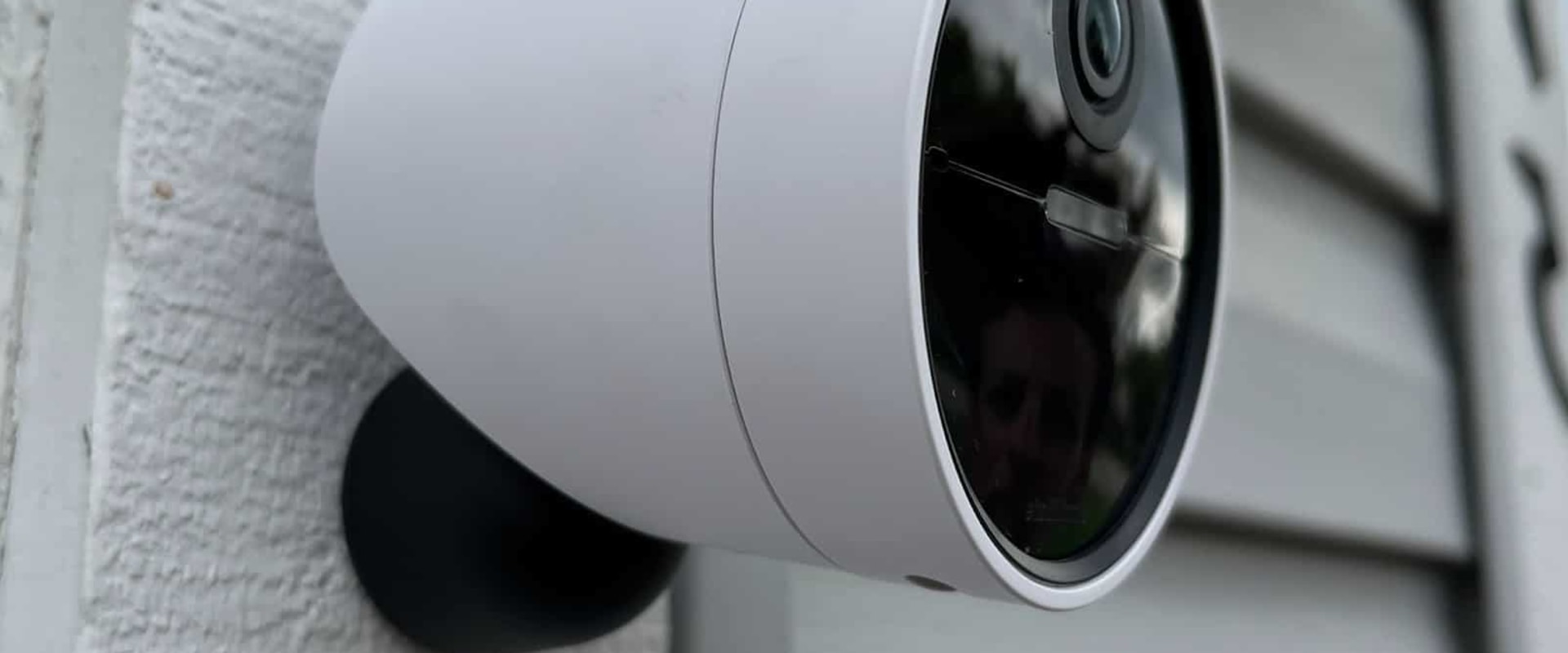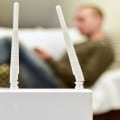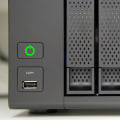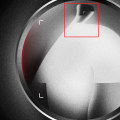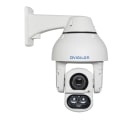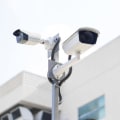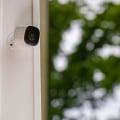When it comes to choosing the best security camera for your needs, there are a lot of factors to consider. One of the most important decisions you'll have to make is whether to mount your camera indoors or outdoors. Both options have their own set of advantages and disadvantages, and it's crucial to understand these differences in order to make the right choice for your specific situation. In this article, we'll dive into the world of indoor and outdoor mounting options for security cameras, exploring the various considerations that come into play.
Whether you're a homeowner looking to protect your property or a business owner trying to secure your premises, this guide will provide valuable insights to help you make an informed decision. So let's get started and explore the pros and cons of indoor vs outdoor mounting options for security cameras. When it comes to protecting our homes and businesses, security cameras are becoming an increasingly popular choice. But with so many options available, it can be overwhelming to determine which type of camera is best for your specific needs. In this article, we will delve into the differences between indoor and outdoor security cameras, and help you choose the best mounting option for your surveillance system. We will start by discussing the main differences between indoor and outdoor security cameras.
Indoor cameras are typically smaller and more discreet, designed to blend in with your home decor. They are also usually less weather-resistant, as they are not meant to withstand the elements. On the other hand, outdoor cameras are larger and more rugged, built to withstand harsh weather conditions and potential tampering from intruders. They also often come with features such as night vision and motion detection. Next, we will explore the technology behind different security camera systems.
This may be of interest to those who are looking for a more advanced surveillance system. Some popular features include wireless connectivity, high-definition video, and remote access through a smartphone or computer. It is important to consider which features are necessary for your specific needs before making a purchase. For those looking for information on installation and placement of security cameras, we have got you covered. We will discuss the best practices for installing and mounting both indoor and outdoor cameras, including optimal height and placement for maximum coverage.
We will also provide tips on how to effectively use your security cameras, such as adjusting the field of view and setting up alerts for motion detection. Our article will also address any concerns or questions you may have about security cameras, such as privacy concerns and cost. We will provide a balanced perspective on these issues and offer tips on how to address them. Finally, we will wrap up our article with a comprehensive comparison of the main points discussed. We will also provide a summary of the main benefits and drawbacks of each type of camera, and help you make an informed decision based on your specific needs.
Technology Behind Security Camera Systems
When it comes to protecting our homes and businesses, security cameras have become an essential tool in ensuring the safety and security of our property. With the advancements in technology, security camera systems have become more sophisticated and efficient, providing us with better surveillance and peace of mind. One of the key features of modern security camera systems is their wireless connectivity.Gone are the days of complicated wiring and installation processes. With wireless connectivity, security cameras can be easily installed and set up, saving time and effort. This also allows for flexibility in terms of placement, as cameras can be easily moved or added to different areas without the hassle of rewiring. In addition to wireless connectivity, high-definition video is another crucial aspect of security camera systems. With advancements in camera technology, high-definition video is now the standard for most security cameras.
This provides clearer and more detailed footage, making it easier to identify potential threats or incidents. Lastly, remote access is a game-changer when it comes to security camera systems. With remote access, users can monitor their surveillance system from anywhere using their mobile devices or computers. This allows for real-time monitoring and the ability to check in on your property even when you're away.
Addressing Concerns and Questions
When it comes to the installation and placement of security cameras, there are a few concerns and questions that may arise. These include privacy, cost, and other considerations that should be taken into account before choosing between indoor and outdoor mounting options.Privacy:
One of the main concerns when it comes to security cameras is privacy.With outdoor cameras, there is always the risk of capturing footage of neighbors or passersby, which can be a violation of their privacy. However, with indoor cameras, there may also be concerns about invasion of privacy, especially if they are placed in sensitive areas such as bedrooms or bathrooms.
Cost:
Cost is another important factor to consider when choosing between indoor and outdoor mounting options. Generally, outdoor cameras tend to be more expensive due to their weatherproof and durable features. Indoor cameras, on the other hand, may be more budget-friendly but may not offer the same level of protection against harsh outdoor elements.Other Considerations:
Aside from privacy and cost, there are other factors that should be considered when deciding between indoor and outdoor mounting options.These include the type of surveillance system you have, the level of security needed for your specific location, and any local regulations or restrictions on camera placement.
Outdoor Security Cameras
When it comes to choosing the right security camera for your surveillance system, one of the first decisions you'll need to make is whether you need an indoor or outdoor camera. While both types serve the same purpose of monitoring and recording activities, there are some key differences and features that set outdoor security cameras apart. One of the main differences between indoor and outdoor cameras is their level of durability. Outdoor cameras are designed to withstand harsh weather conditions such as rain, snow, and extreme temperatures, making them a more reliable option for outdoor use. They also come equipped with features such as weatherproof housing and tamper-resistant designs to protect them from vandalism and tampering. In addition to durability, outdoor security cameras also have a wider field of view compared to indoor cameras.This allows them to cover larger areas and capture more details, making them ideal for monitoring large outdoor spaces such as parking lots, backyards, and driveways. Another important feature of outdoor security cameras is their night vision capabilities. These cameras use infrared technology to capture clear footage even in low-light or no-light conditions. This is crucial for outdoor surveillance, as most criminal activities tend to occur during the night when it's dark. Lastly, outdoor security cameras also come with advanced motion detection technology. This allows them to detect any movement within their field of view and send alerts to the homeowner or business owner.
Some cameras even have the ability to distinguish between humans and animals, reducing false alarms and increasing the accuracy of notifications.
Indoor Security Cameras
When it comes to protecting our homes and businesses, security cameras have become an essential part of any surveillance system. They provide a sense of security and peace of mind, allowing us to monitor our properties even when we are not physically present. However, not all security cameras are created equal, and it's important to understand the differences between indoor and outdoor options before making a decision. In this article, we will focus on Indoor Security Cameras and their unique features.Differences:
One of the main differences between indoor and outdoor security cameras is their intended use.Indoor cameras are specifically designed to be used indoors, while outdoor cameras are built to withstand harsh weather conditions and external threats. This means that indoor cameras may not be as durable or weather-resistant as outdoor cameras. Another difference is the field of view. Indoor cameras typically have a narrower field of view compared to outdoor cameras, as they are meant to cover smaller spaces such as rooms or hallways. This allows for more detailed and focused footage.
Features:
Indoor security cameras often come with advanced features that cater to their specific use.These features may include night vision, motion detection, two-way audio, and remote access. Night vision allows for clear footage in low light conditions, while motion detection can send alerts to your phone or email when movement is detected. Two-way audio allows you to communicate with whoever is in the room, while remote access allows you to view live footage from your camera anytime, anywhere.
Conclusion:
When choosing between indoor and outdoor mounting options for your security cameras, it's important to consider the differences and features of each type. If you are primarily looking to monitor indoor spaces, then an indoor camera would be the best option for you.Just make sure to choose one with the necessary features to meet your specific needs.
Installation and Placement Considerations
When it comes to installing security cameras, there are several important factors to consider. Whether you are mounting your cameras indoors or outdoors, following these best practices will ensure that your surveillance system is effective and efficient.Indoor Camera Placement
When installing indoor security cameras, the main goal is to capture a clear view of the areas you want to monitor. This includes entryways, high-traffic areas, and valuable assets such as safes or cash registers.It is important to place the cameras at a height that allows for a full view of the room, while also being discreet enough to not draw attention. One of the benefits of indoor cameras is that they do not have to withstand harsh weather conditions, so their placement options are more flexible. However, it is still important to consider potential obstructions such as furniture, shelves, or decorations that could block the camera's view.
Outdoor Camera Placement
Outdoor security cameras require more careful consideration when it comes to placement.These cameras need to be weatherproof and able to withstand extreme temperatures. They should also be placed at a height that prevents tampering or vandalism. The main objective with outdoor camera placement is to cover all entry points and vulnerable areas of your property. This includes doors, windows, and any blind spots where someone could potentially hide.
It is also recommended to have multiple cameras covering different angles for maximum coverage.
Mounting Options
When it comes to mounting options for both indoor and outdoor cameras, there are a few choices available. The most common methods include wall mounts, ceiling mounts, and pole mounts. Each option has its own benefits and should be chosen based on the specific needs and layout of your property.Overall, the key to effective installation and placement of security cameras is to carefully assess your property and its vulnerabilities. By following these best practices, you can ensure that your surveillance system is optimized for maximum protection. In conclusion, when it comes to choosing between indoor and outdoor security cameras, it is important to consider your specific needs and the features that are most important to you. Whether you are looking for a discreet indoor camera or a rugged outdoor one, there are plenty of options available to fit your budget. Additionally, proper installation and placement are crucial for getting the most out of your surveillance system.
By following the best practices outlined in this article, you can ensure that your home or business is well-protected.
